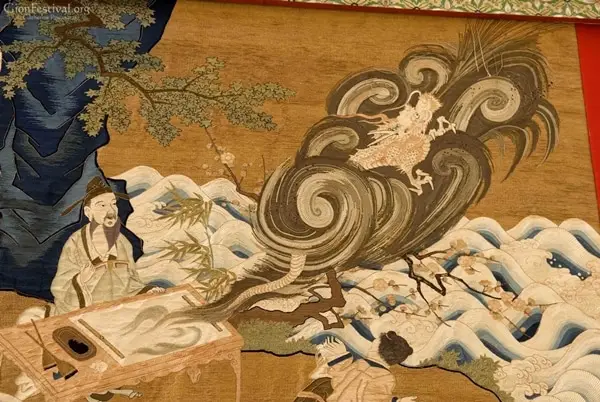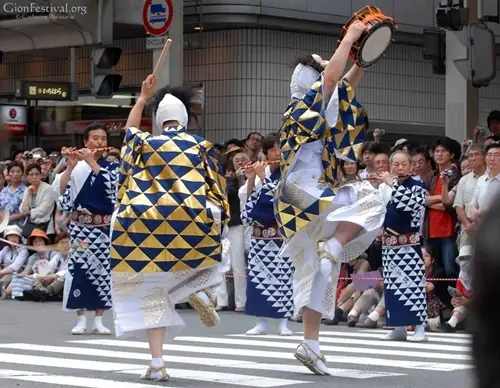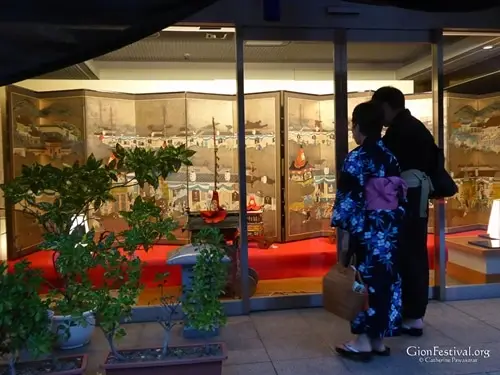Kyoto was the ancient capital of Japan for a thousand years, making it a center for Japan’s highly developed culture, arts, and crafts. Over the centuries, Gion Matsuri patrons decorated their yamaboko floats lavishly with the finest arts and craftsmanship available, leading to their nickname, “mobile museums.”
Throughout the Gion Matsuri, you’ll find outstanding paintings, carvings, statuary, metalwork, kimono, lacquerware, and other arts. Pay attention to the details of the yamaboko float decorations, and visit their shrine/treasure areas to enjoy the artistic masterworks up close.
In particular the diverse textiles adorning the 34 Gion Festival float exteriors represent a globally rare collection. Together they span over 400 years, and a geographical area from Japan, through China and Persia, to Belgium’s Gobelin workshops. Some of the textile types exist nowhere else; as a collection, the diverse provenance is unique.

From 1639 to 1853, trade with the outside world was almost prohibited in Japan. Kyoto kimono merchants’ ability to get around these laws and import exotic foreign goods dazzled the populace and flaunted their power. Many textiles visually depict fascinating tales, from meetings of Taoist sages, to the saga of Helen of Troy. Imagine how exotic and evocative they were hundreds of years ago! Nowadays many are being replaced with high-quality reproductions, but the originals are often on view in the floats‘ meeting spaces.
Kimono merchants commissioned local metalworkers, woodcarvers, and painters to adorn float rooves, railings, posts, and ceilings with natural and cultural iconography. Gion Festival commissions also helped Kyoto-based sculptors, weavers, embroiderers, and other artisans thrive. This longstanding tradition translates to a vast inheritance of centuries of riches in Kyoto’s artistic and cultural world.
In addition to the displays of the festival’s visual treasures from 10-24 July, rehearsing float musicians serenade downtown neighborhoods with their otherworldly music. To unaccustomed ears, the music may sound disharmonious, or possibly unsettling. It becomes more intriguing when one realizes that the music has its roots in shamanic ritual, with speeds and rhythms designed to bring a shaman or dancer into a trance-like state.
Something along these lines can still be glimpsed in the Gion Festival today, at the Ayagasa Boko (“Damask Umbrella” float). Though ancient screen paintings depict several of the floats with dancers centuries ago, it is the only float to feature them today.

Meanwhile, local families and businesses share in the Gion Festival’s spirit of generosity to the public in a sub-festival called the Byōbu Matsuri (Folding-Screen Festival). The Byōbu Matsuri is stronger in the smaller Ato Matsuri (July 21-24).
As you walk along the streets, keep your eyes open for window displays. Sometimes these may be priceless folding screens, kimono, and other family heirlooms. Other times they are more modest, but lovingly created and shared.
The Byōbu Matsuri is entirely at the discretion of local residents and companies. Feel free to reciprocate their hospitality with a smile, wave, or “thank you.” Our appreciation of their generosity will surely help ensure that future generations can enjoy it too.
